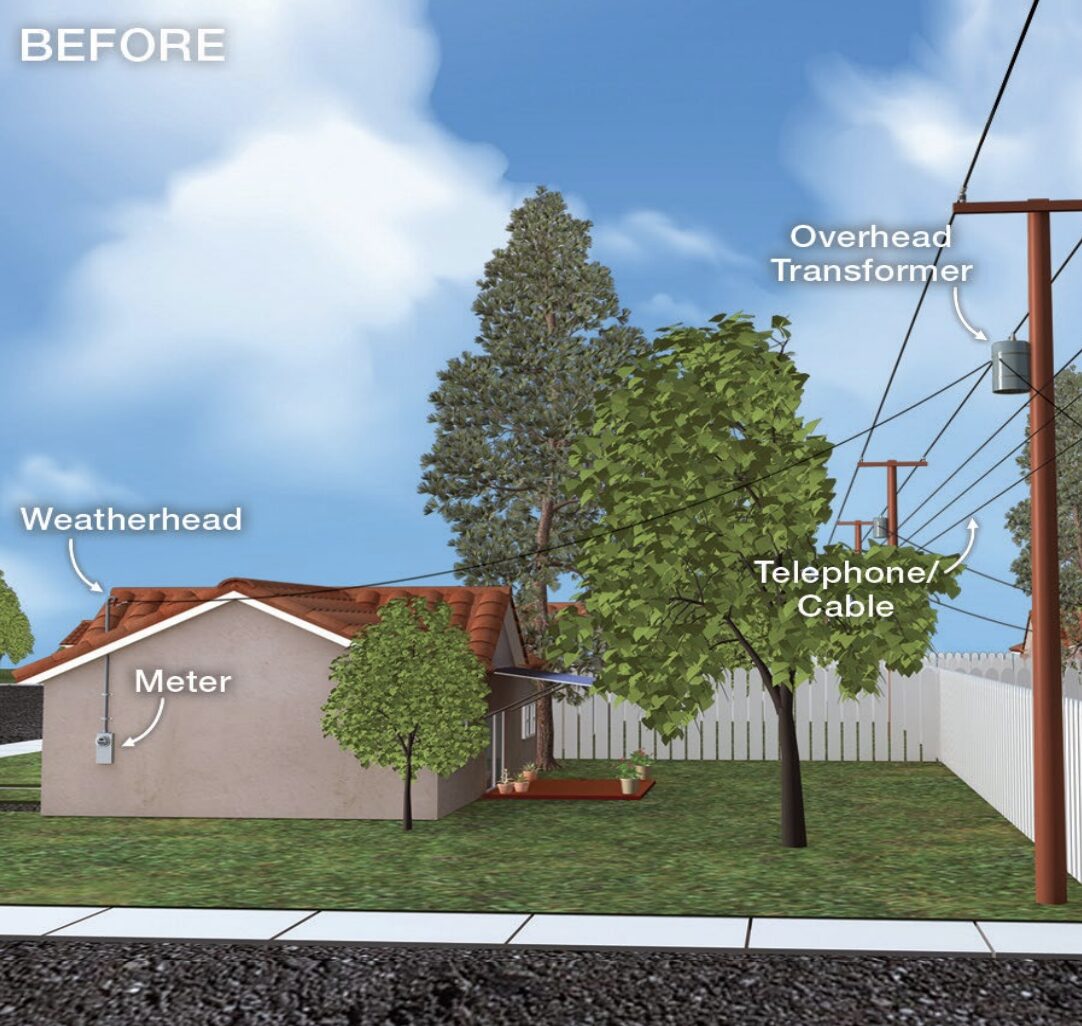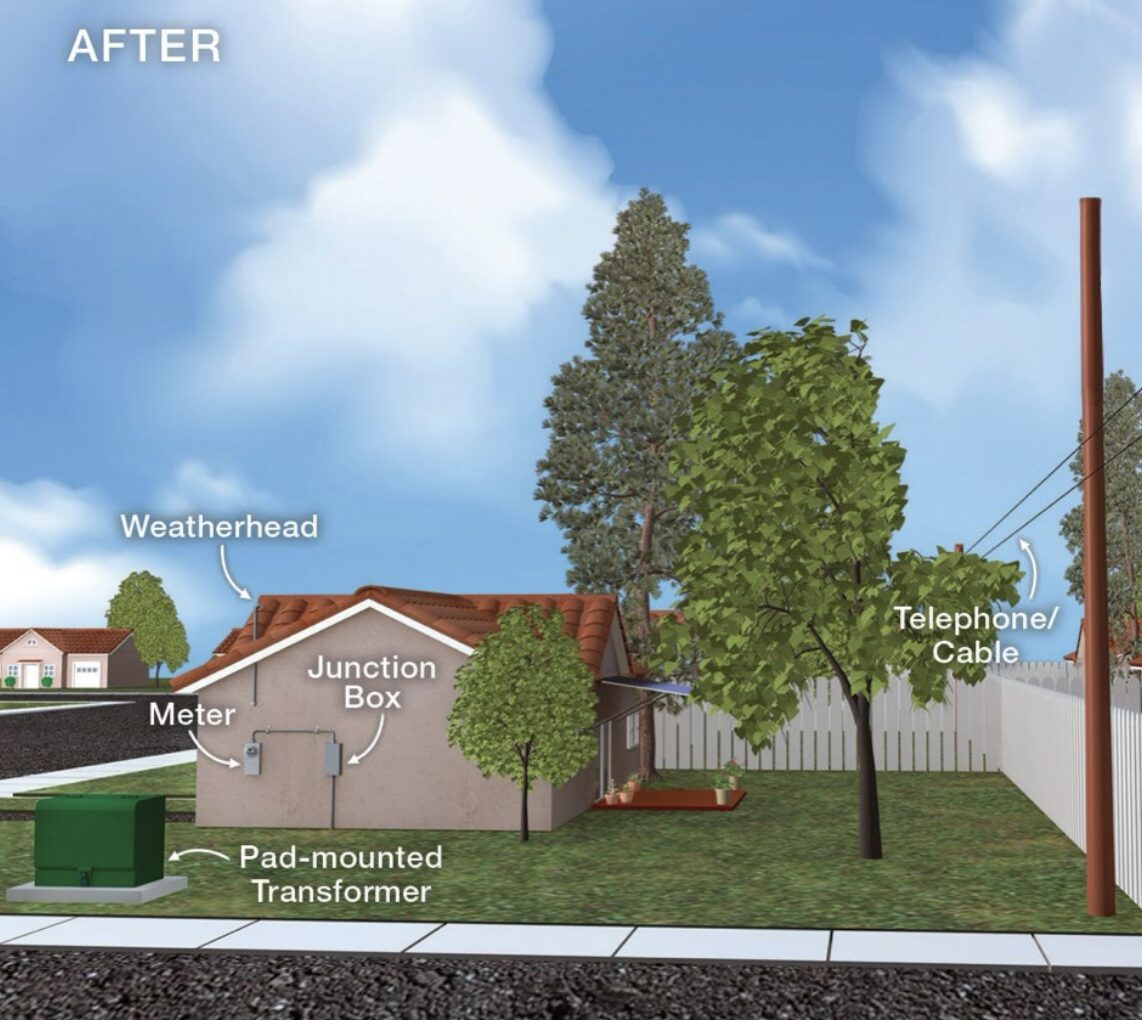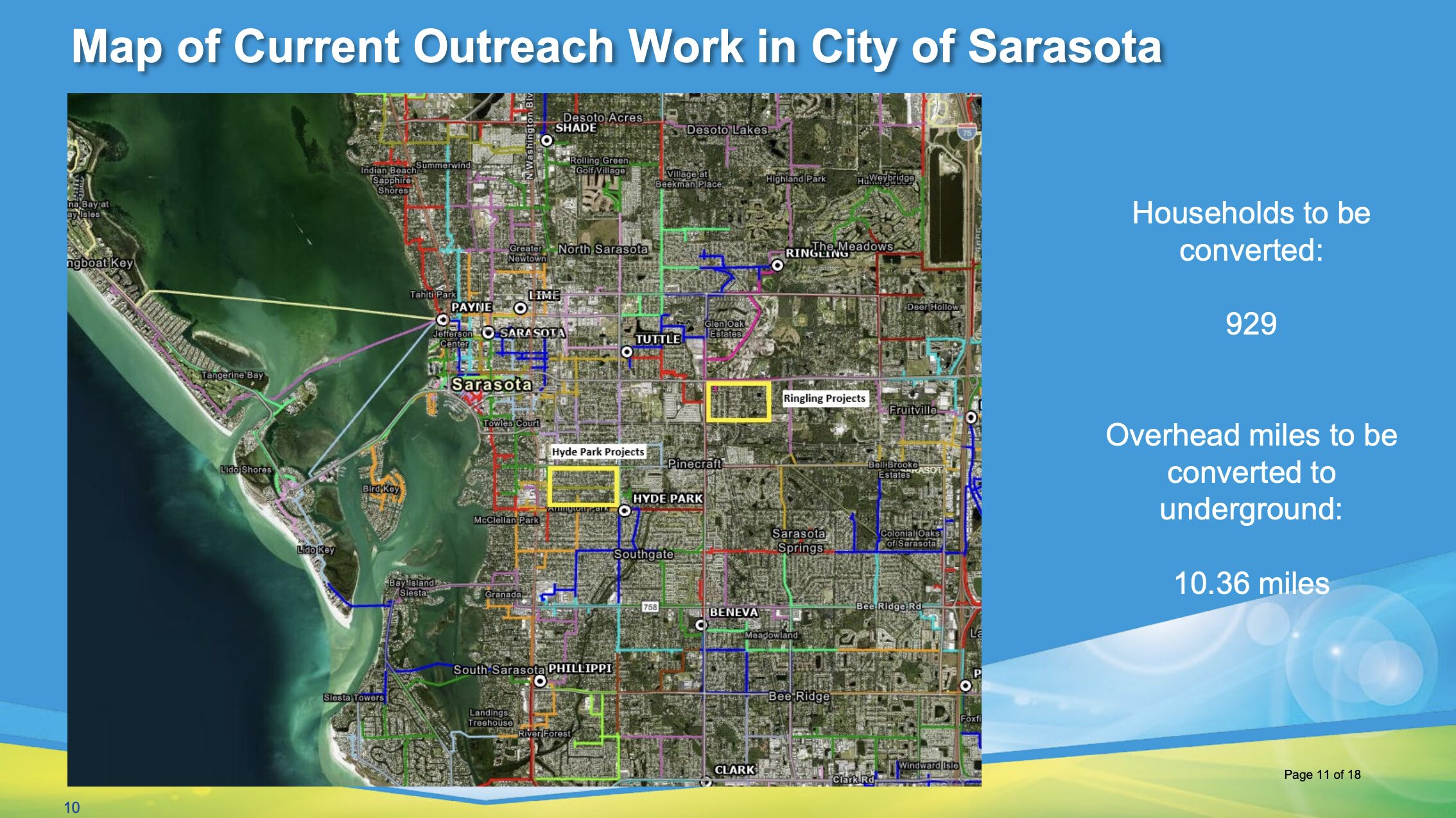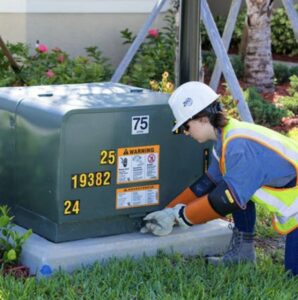Underground lines are far more storm secure. But the cost is being passed on to consumers.
By Noah Vinsky
Original Air Date: July 18, 2025
Host: In a few older City of Sarasota neighborhoods, the utility pole has become a thing of the past. FPL has laid 10 miles of underground line, which reaches about 1,700 houses. Now, FPL wants to bury a line for an additional 929 Sarasota houses, a project it will present to the Sarasota City Commission on Monday. WSLR reporter Noah Vinsky has the details.
 Noah Vinsky: It’s called the Storm Secure Underground Program, which is FPL’s program aiming to make the Florida power grid more storm resilient. One of the ways it’s doing that is by burying power lines underground. FPL spokesperson Kamrel Eppinger says these underground lines make a big difference during storm season.
Noah Vinsky: It’s called the Storm Secure Underground Program, which is FPL’s program aiming to make the Florida power grid more storm resilient. One of the ways it’s doing that is by burying power lines underground. FPL spokesperson Kamrel Eppinger says these underground lines make a big difference during storm season.
Kamrel Eppinger: We’ve seen continually that these underground lines typically perform better than their overhead counterparts. During the last storm season, with Hurricanes Debbie, Helene and Milton combined, systemwide we saw they perform up to 14 times better than the overhead lines.

NV: Sarasota is one of 15 storm secure projects throughout the state, which also includes tree management and an inspection of existing power lines. About 76% of Sarasota County residents lost power during Hurricane Milton. Eppinger says FPL looks at outage data when selecting neighborhoods for the project.
KE: This is something that we’re going to do continually for the days and weeks and months and years ahead. Again, it’s a data driven approach, so as long as the data is there that tells us where there is a need for this program, we will continue to do it.
NV: There are a few storm-prone island towns that have had their entire power grid moved underground, Longboat Key being one of them. The town just finished their decade-long undergrounding project in June when the final pole was removed. But burying lines isn’t foolproof. Underground power lines are still prone to being damaged by flooding. The Longboat Observer reported that 20 underground transformers failed on Longboat Key during Hurricane Idalia in 2023. That left about 400 customers without power for 15 hours. Sarasota commissioner Jen Ahearn-Koch said there are lessons the city can learn from Longboat Key’s undergrounding process.
 Jen Ahearn-Koch: This is something that is on the coastline. This is something that’s being done in an area that is very likely to flood at some point in time every year. If we’re going underground, make sure we do that every step of the way keeping that in mind.
Jen Ahearn-Koch: This is something that is on the coastline. This is something that’s being done in an area that is very likely to flood at some point in time every year. If we’re going underground, make sure we do that every step of the way keeping that in mind.
NV: To be sure, FPL’s endorsement of undergrounding is a turnaround of sorts. Just a few years ago, the investor-owned utility argued undergrounding is not effective and too costly. Indeed, relocating hundreds of miles of overhead power lines comes at a cost. In the case of Longboat Key a decade ago, the utility passed on the cost to the town. But now, FPL is rolling over the cost to all customers, saying the Storm Secure Underground Program adds about $8 to a typical customer’s monthly bill. That’s regardless if your lines have been placed underground or not. This is on top of a record base rate increase FPL has asked the state of Florida for. If passed, it could cost customers up to an additional $18 per month.
 Despite the added expense and susceptibility to floods, Ahearn-Koch sees the undergrounding project as a benefit to the city, especially in hard-hit areas of North Sarasota that have yet to have any of its power lines relocated.
Despite the added expense and susceptibility to floods, Ahearn-Koch sees the undergrounding project as a benefit to the city, especially in hard-hit areas of North Sarasota that have yet to have any of its power lines relocated.
JA: I would like to see more of it. I’m not sure of the downside to it. And FPL’s own admission that it is far more effective to be underground than above ground.
NV: Eppinger says FPL plans to expand the program to more Sarasota neighborhoods in the future.
Noah Vinsky for WSLR News.
WSLR News aims to keep the local community informed with our 1/2 hour local news show, quarterly newspaper and social media feeds. The local news broadcast airs on Wednesdays and Fridays at 6pm.